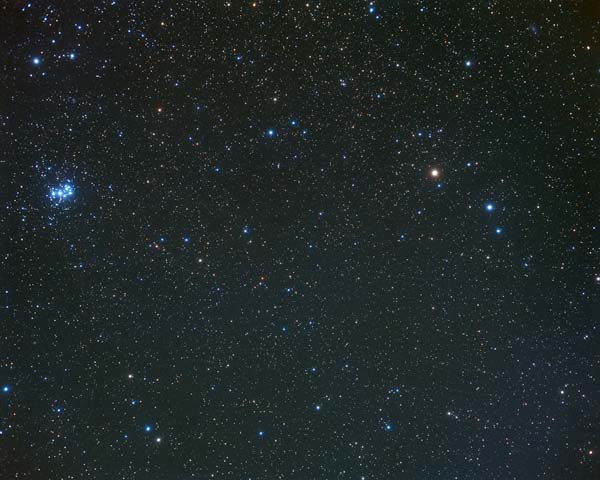DMI image reference Ari. « Previous || Next » Constellations A » H || Constellations I » V
 Roll mouse over picture to see constellation figures and outlines
Roll mouse over picture to see constellation figures and outlines Image and text ©2008 Akira Fujii/David Malin Images.
In the picture above, north is at the top and the image covers 36 x 29 degrees.
Image centre is located at 02:43:28.3, +21:34:15 (H:M:S, D:M:S, J2000) Astrometric data from Astrometry.net.
Best seen in the early evening in December
Though inconspicuous, Aries is one of the constellations of the zodiac and from ancient times has been represented by a ram, the same ram whose golden fleece was sought by Jason and the Argonauts in the great ship Argo Navis. For more than 2000 years it also of astronomical importance because it was the constellation where the Sun crossed the celestial equator (ecliptic) each year at the vernal equinox, marking the First Point in Aries from which Right Ascension is measured. Precession has now carried this point into Pisces. Some more references to the constellation are in Wikipedia
The constellation is the 39th largest in the sky and covers about 440 square degrees. The best-known object in this field is the Pleiades star cluster (M45 in Taurus, see below).
Main named stars in Aries: (Greek alphabet)
Atik (ο Per), Atlas, Botein (γ Ari), Hamal (α Ari), Mesarthim (γ1 Ari), Sheratan (β Ari).
Adjoining constellations: Cetus, Perseus, Pisces, Taurus, Triangulum.
Related images (other sources)
UKS 18 The Pleiades stars
UKS 18a The Pleiades stars, wide field